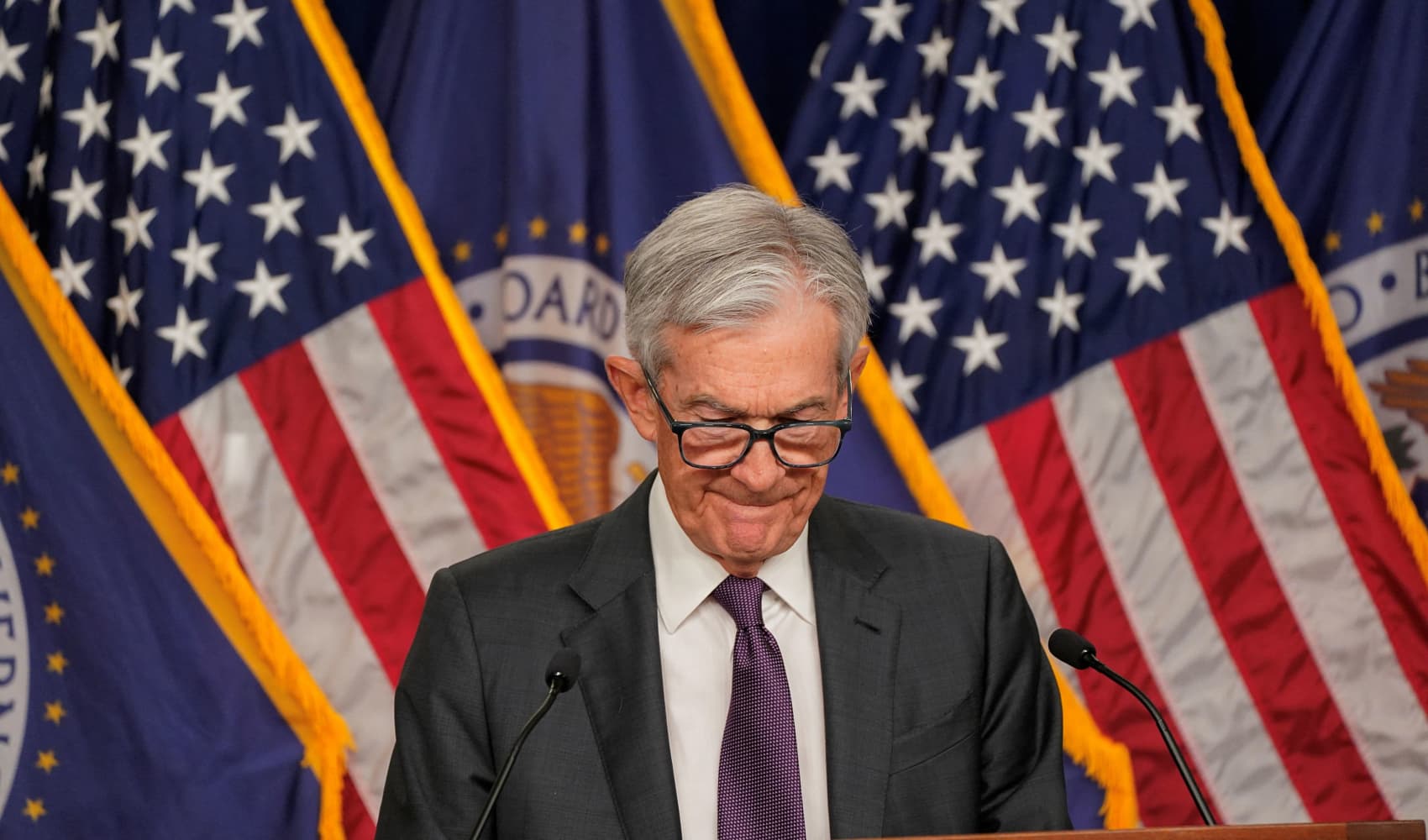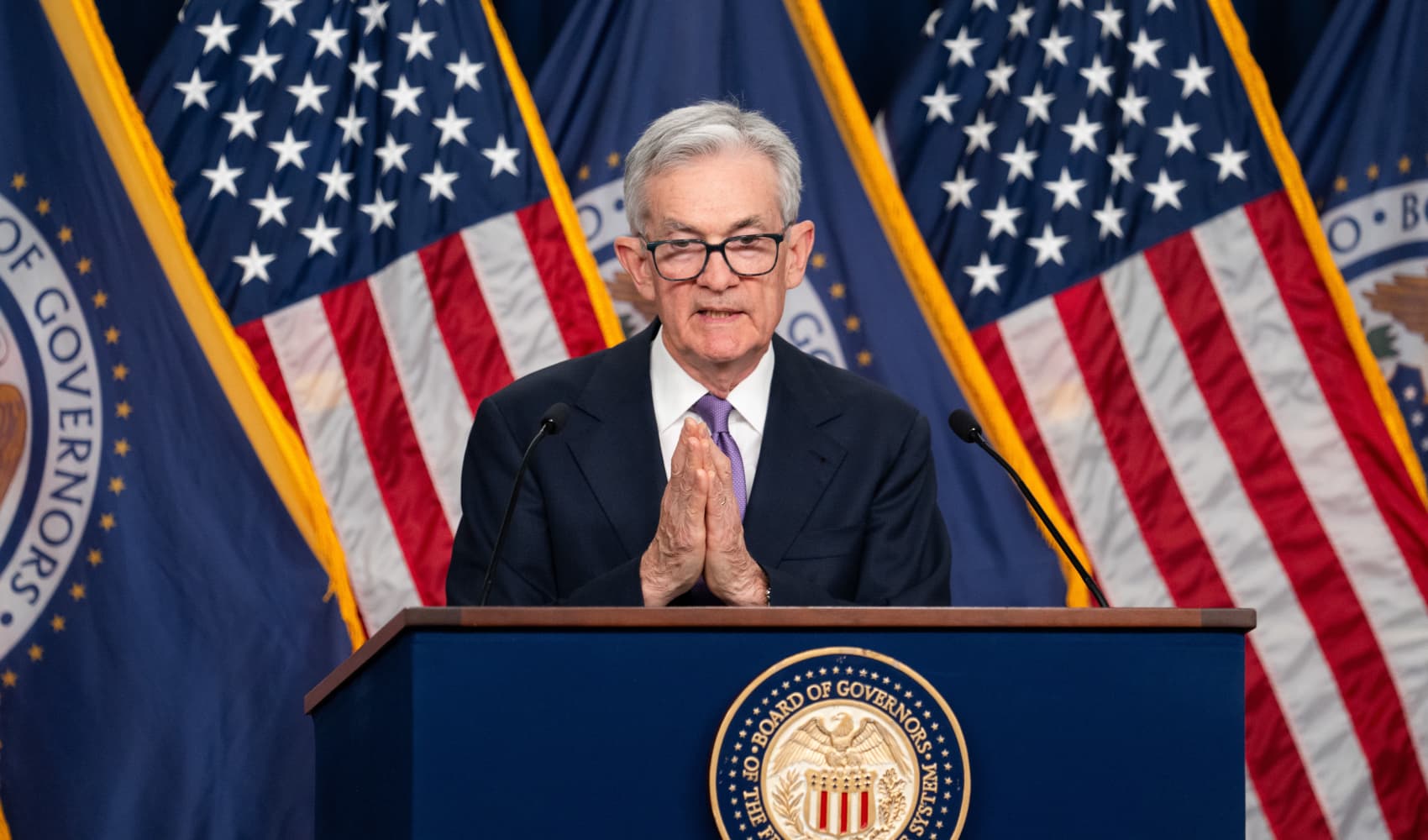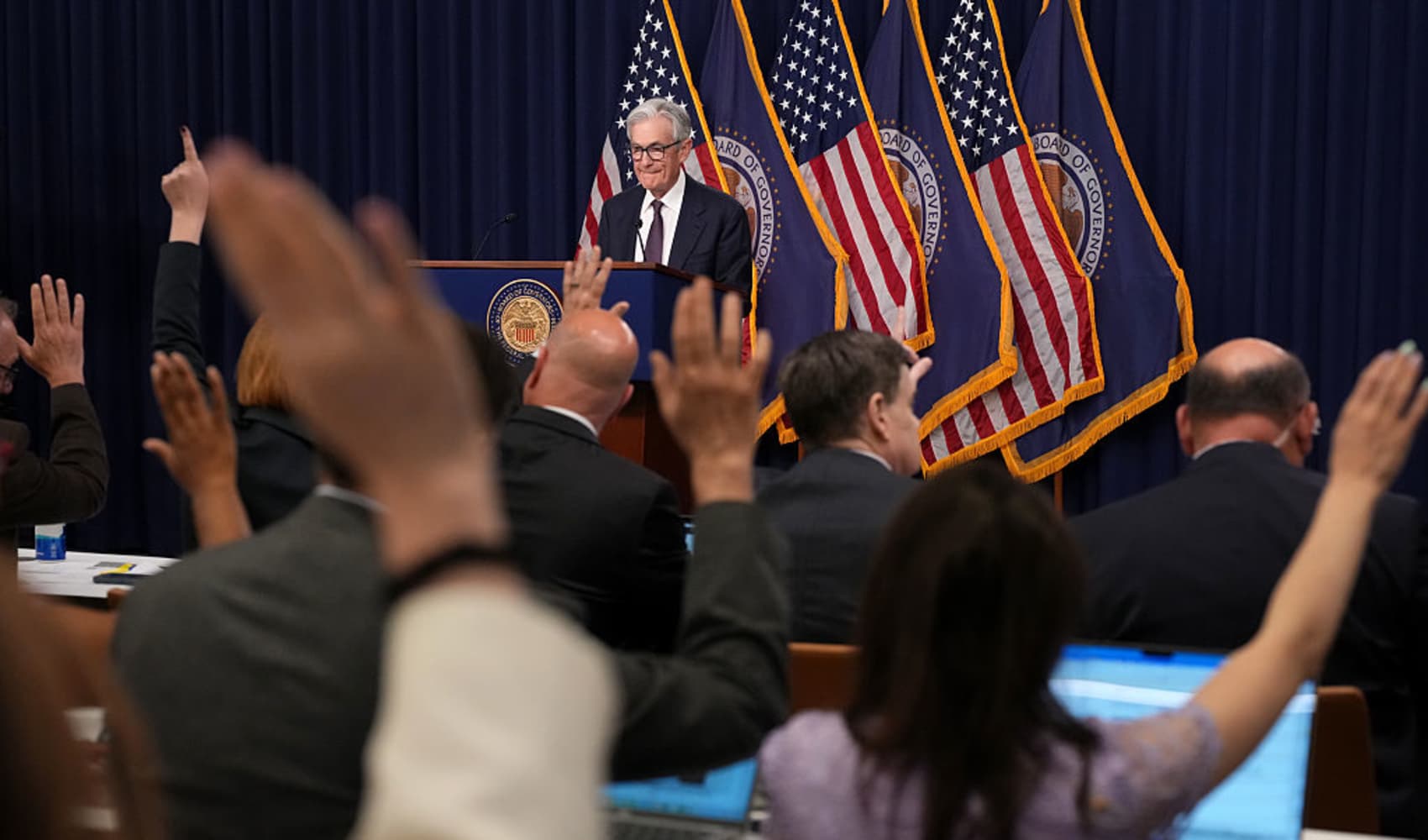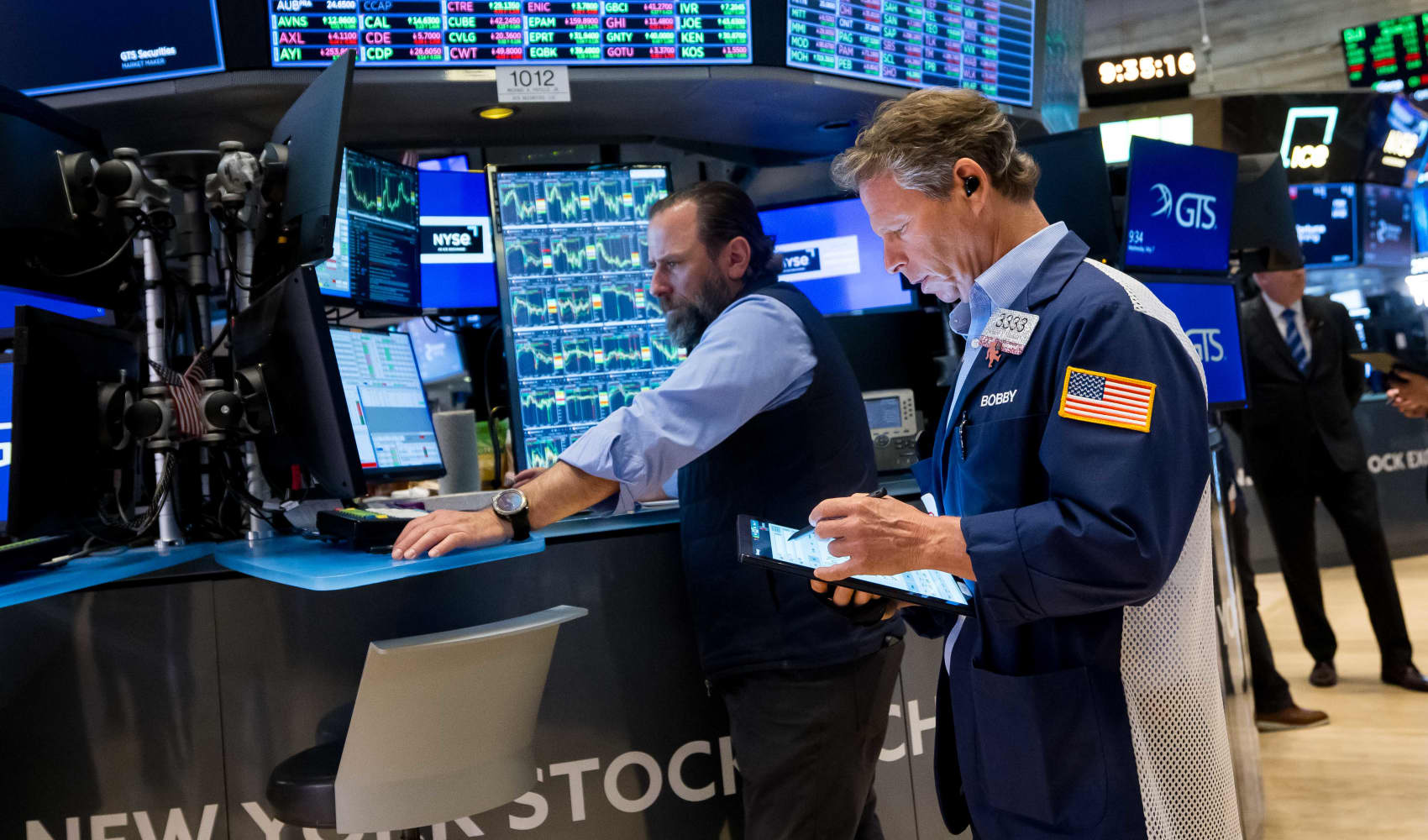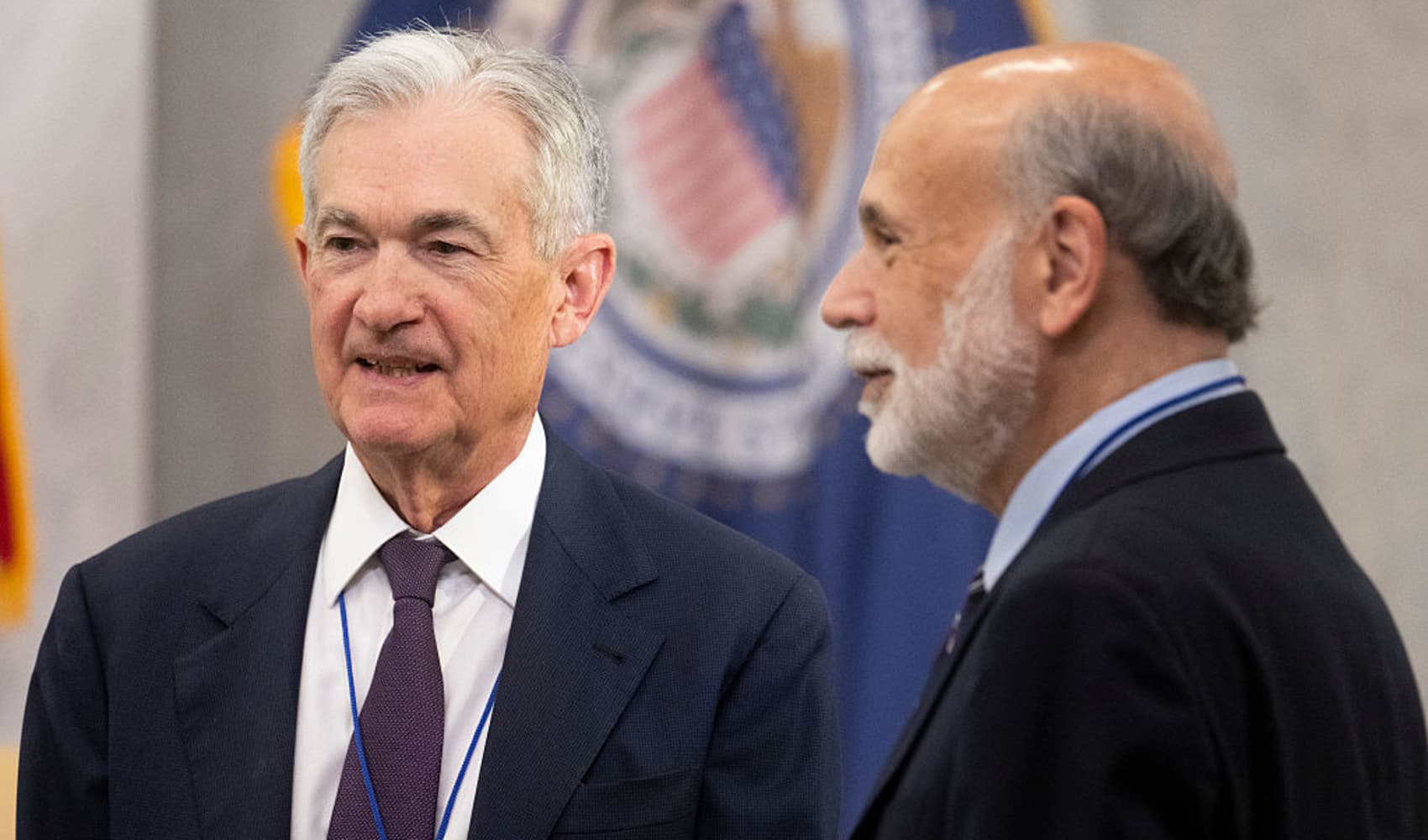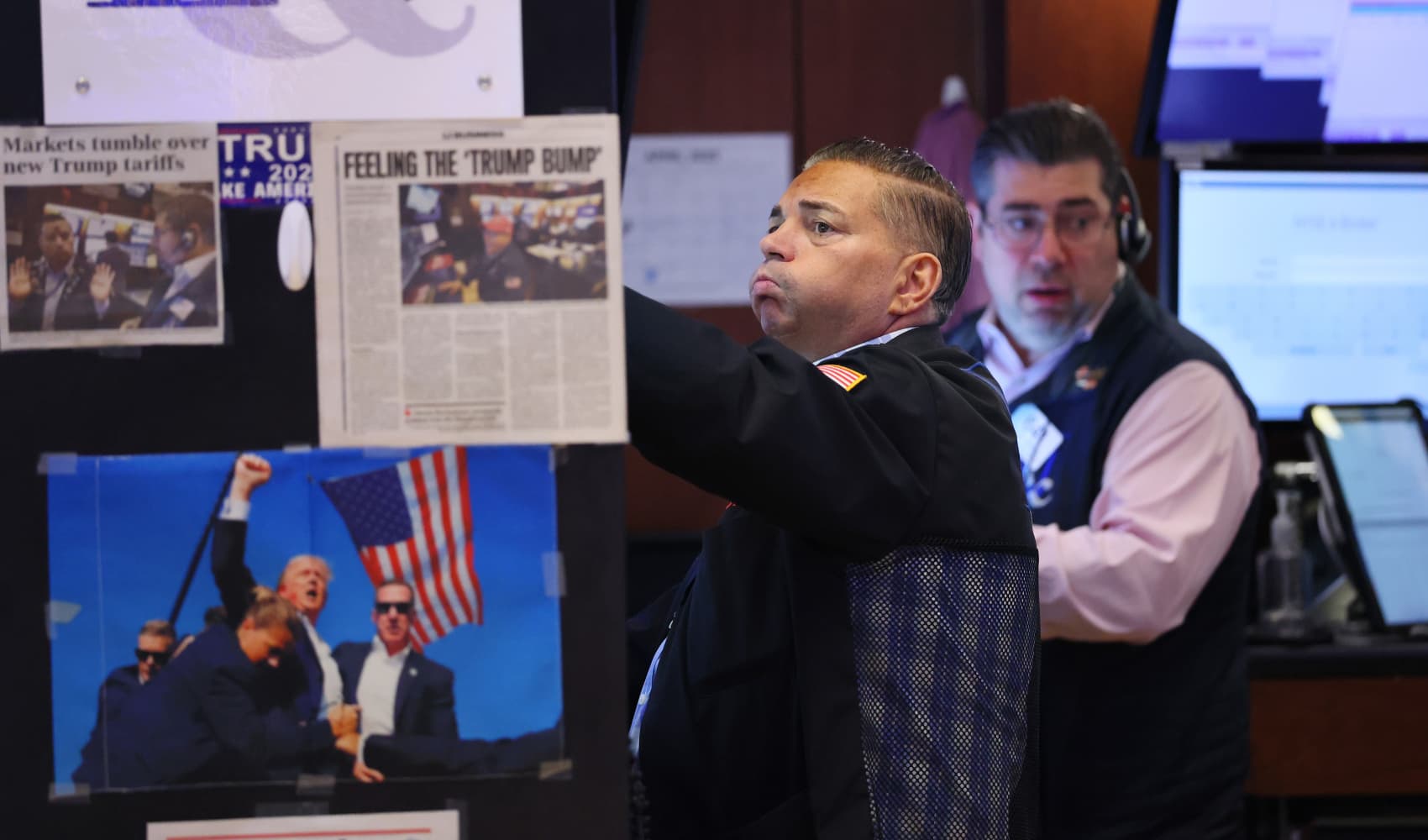Rate Cuts Coming? Wobbling Economy Forces Fed's Hand
Wobbling Economy: Will the Fed Ride to the Rescue with Rate Cuts?
Introduction: Navigating the Economic Storm
Hold on tight, folks! The economic rollercoaster seems to be gaining speed. We’re facing a rather unsettling mix of rising prices, sluggish growth, and increasing unemployment – a cocktail economists often call “stagflation.” It’s like trying to drive uphill in a car that's running on fumes. But what's the central bank, the Federal Reserve (Fed), likely to do in response? According to a recent CNBC survey, the majority believe the Fed will reach for the rate-cut lever.
The CNBC Fed Survey: A Glimpse into the Future
The CNBC Fed Survey, a reliable barometer of economic sentiment, paints a picture of growing unease. Let's break down the key findings:
- Rate Cut Expectations: A whopping 65% of respondents believe the Fed will cut interest rates in response to higher prices caused by tariffs, combined with weakening economic growth and employment. This is a strong signal that the market anticipates a shift in monetary policy.
- Holding Steady? Not Likely: Only 26% think the Fed will hold rates steady, and a mere 3% believe they will actually raise rates in the face of stagflation. It appears most experts feel inaction or tightening would only exacerbate the current economic challenges.
- Recession on the Horizon?: The odds of a recession within the next year have surged to 53%, a dramatic increase from just 22% in January. This represents the largest two-survey jump since 2022, indicating a significant shift in recession fears.
So, what does all this mean for you and your wallet?
Understanding Stagflation: The Economic Monster
Stagflation is an ugly beast. Imagine a scenario where the price of everything – from groceries to gas – keeps going up (inflation), while at the same time, businesses are slowing down, leading to job losses (stagnation). It's the worst of both worlds! It limits the Fed's options because normally, if the economy is weak, the Fed can cut rates. But if inflation is high, cutting rates makes inflation worse. This situation puts the Fed in a very tough spot.
Why Rate Cuts? The Fed's Dilemma and Anticipated Response
The Lesser of Two Evils?
Why are so many predicting rate cuts despite the inflationary pressures? The logic goes that a deep recession is a far more devastating outcome than moderate inflation. The Fed may see stimulating growth, even at the risk of slightly higher prices, as the lesser of two evils.
The Tariff Tango: A Wrench in the Machine
Tariffs, essentially taxes on imports, contribute directly to higher prices. Businesses pass these costs on to consumers, fueling inflation. By potentially cutting rates, the Fed could attempt to offset some of the negative impact of tariffs on economic growth. Think of it as applying a monetary band-aid to a tariff-induced wound.
The Recession Risk: A Ticking Time Bomb?
A Concerning Surge
The significant jump in recession probability is alarming. A 53% chance isn’t a certainty, but it's a flashing red light demanding attention. It suggests that businesses and investors are losing confidence in the economy's ability to sustain itself. It's like the engine light going on in your car – you better get it checked out!
What Drives Recession Fears?
Several factors contribute to recession fears: rising interest rates (before potential cuts), persistent inflation, geopolitical uncertainty, and slowing global growth. It's a complex web of interconnected issues, and disentangling them is no easy task.
Impact of Rate Cuts: Who Wins and Who Loses?
Winners: Borrowers and Homebuyers
Lower interest rates generally benefit borrowers. Mortgages, car loans, and other forms of debt become cheaper. This can stimulate consumer spending and investment, boosting economic activity. For potential homebuyers, lower mortgage rates could make homeownership more accessible. It’s a welcome relief for anyone carrying a significant debt load.
Losers: Savers and the Dollar?
On the flip side, lower interest rates can hurt savers. Savings accounts and certificates of deposit (CDs) offer lower returns, making it harder to accumulate wealth. Furthermore, rate cuts can weaken the U.S. dollar, potentially making imports more expensive and contributing to inflation. However, this impact is often muted by global economic conditions.
Beyond Rate Cuts: What Other Tools Does the Fed Have?
Quantitative Easing (QE): The Big Guns
If rate cuts aren't enough, the Fed could resort to quantitative easing (QE). This involves the central bank injecting liquidity into the financial system by purchasing assets like government bonds. QE aims to lower long-term interest rates and encourage lending.
Forward Guidance: Talking the Market Through It
The Fed also uses "forward guidance" – communicating its intentions to the market. By clearly signaling its future policy path, the Fed can influence expectations and manage market volatility. It's like giving drivers a clear roadmap of the road ahead.
Navigating the Uncertainty: What Should You Do?
Review Your Finances
Now is a good time to review your financial situation. Assess your debt levels, consider your investment strategy, and ensure you have an adequate emergency fund. Being prepared can help you weather any economic storm.
Stay Informed
Keep an eye on economic data and Fed announcements. Staying informed will allow you to make more informed decisions about your finances. The more information you have, the better you are prepared.
Expert Opinions: What Are the Pundits Saying?
Economists are divided on the best course of action for the Fed. Some argue that prioritizing inflation is crucial, even if it means risking a recession. Others believe that supporting growth and employment should be the primary focus, even if it means tolerating higher prices. The debate highlights the complexity of the situation and the lack of easy answers.
The Global Perspective: Are We Alone in This?
The U.S. isn't the only country grappling with economic challenges. Many other nations are facing similar issues of inflation, slow growth, and recession risks. Central banks around the world are responding in different ways, creating a complex and interconnected global economic landscape. Think of the economy as a system; the more you mess with one element, the more it affects another element.
The Political Landscape: Elections and Economic Policy
Political considerations can also influence economic policy. With elections on the horizon, policymakers may be more inclined to take actions that support economic growth, even if it means risking higher inflation. The political narrative can often sway perceptions of the economy. This can impact investor confidence and, ultimately, economic performance.
Alternative Scenarios: What If the Fed Does Something Different?
The Hawkish Surprise: Rate Hikes?
While unlikely, it's possible the Fed could surprise the market with further rate hikes if inflation proves to be more persistent than anticipated. This would be a hawkish move, aimed at aggressively curbing inflation, even at the expense of economic growth.
The Goldilocks Scenario: A Soft Landing?
A more optimistic scenario is a "soft landing," where the Fed manages to bring inflation under control without triggering a recession. This would require a delicate balancing act and a bit of luck.
Conclusion: The Fed's Tightrope Walk
Conclusion: Navigating the Economic Landscape: What's Next?
The CNBC Fed Survey paints a clear picture: economic uncertainty is on the rise. The anticipation of Fed rate cuts reflects concerns about slowing growth and the increasing probability of a recession. However, the Fed faces a difficult balancing act, navigating the competing pressures of inflation and economic stagnation. Whether the Fed chooses to cut, hold, or even hike rates, the consequences will ripple throughout the economy, impacting businesses, consumers, and investors alike. Staying informed and prepared is the best way to navigate these turbulent times.
Frequently Asked Questions (FAQs)
Here are some frequently asked questions about the current economic situation and the Fed's potential response:
- What is stagflation, and why is it bad?
Stagflation is a combination of high inflation and slow economic growth, often accompanied by rising unemployment. It's bad because it limits the central bank's ability to stimulate the economy without worsening inflation.
- Why are people so worried about a recession?
Recessions can lead to job losses, reduced consumer spending, and lower investment, impacting virtually everyone. Businesses suffer, markets decline, and personal finances are strained.
- How do interest rate cuts affect me?
Lower interest rates can make borrowing cheaper, benefiting borrowers and potentially stimulating economic growth. However, they can also reduce returns on savings accounts and potentially weaken the U.S. dollar.
- What is the Federal Reserve, and what does it do?
The Federal Reserve is the central bank of the United States. It is responsible for setting monetary policy, regulating banks, and maintaining the stability of the financial system. It essentially controls the money supply and interest rates in an attempt to influence the economy.
- What can I do to protect myself financially during an economic downturn?
Build an emergency fund, reduce debt, diversify your investments, and stay informed about economic developments. Consider talking to a financial advisor for personalized advice.
